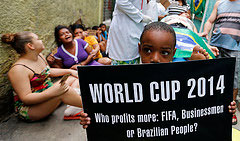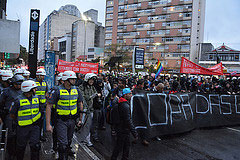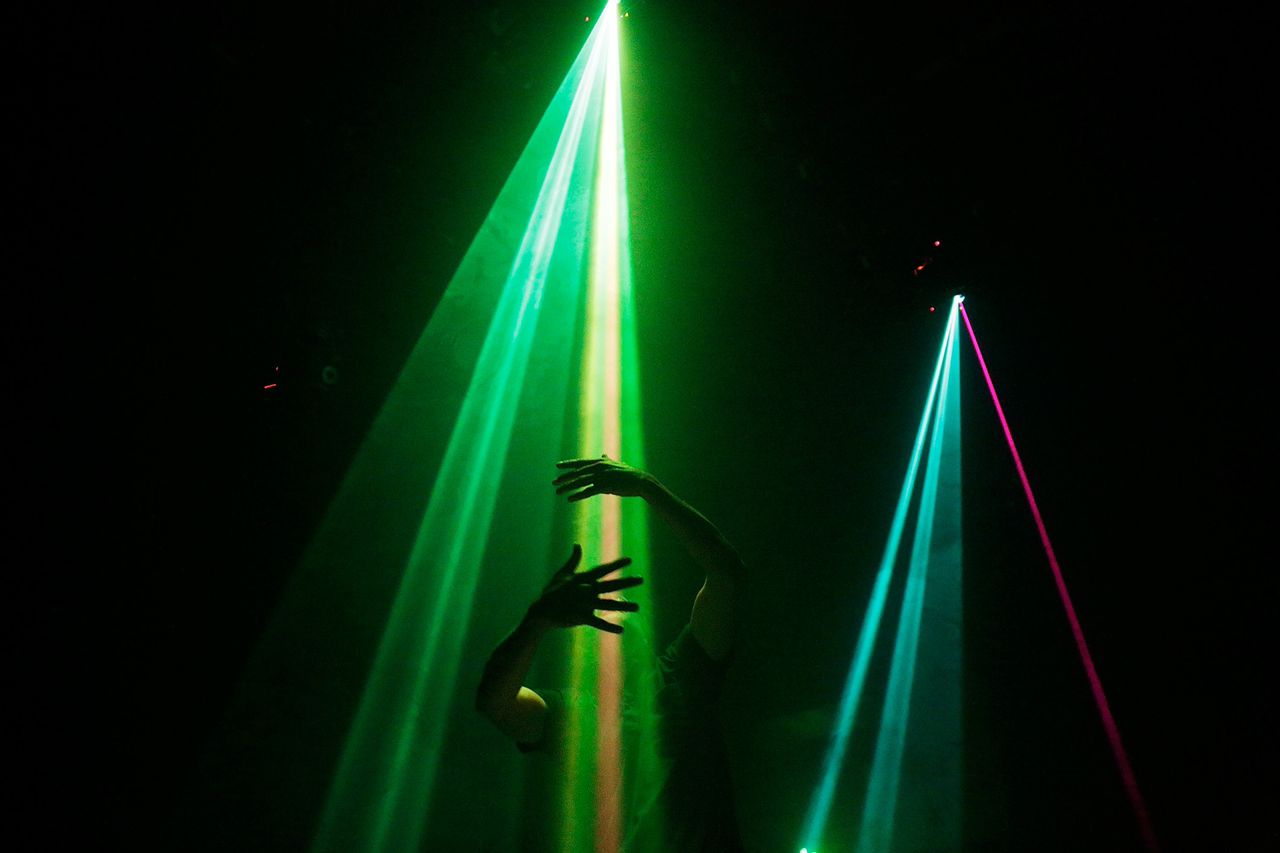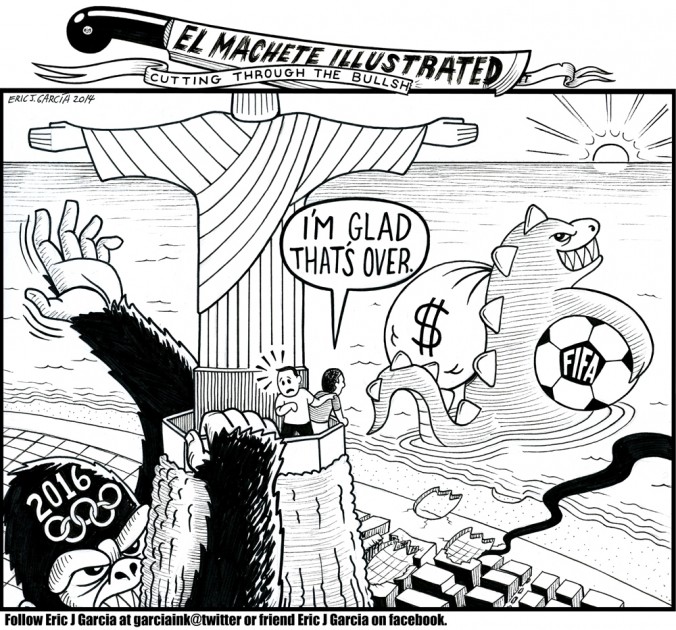
The 2014 World Cup has brought teams and supporters from around the world to Brazil. It also brought mass evictions, destruction of homes and huge protests. Hundreds of thousands of Brazilians took to the streets this June chanting “FIFA go home,” to the World Cup organization that The Nation’s Dave Zirin called “a neoliberal Trojan horse.”
According to Zirin, FIFA arrives under the guise of a hugely popular competition that is really a tool for the host country’s elite to “pursue development projects aimed at building up tourist infrastructure and elevating the industries of gentrification and displacement over pressing needs in healthcare, housing, schools and fighting poverty.”
Under FIFA’s neoliberal agenda, favelas, or slums, surrounding Brazil’s soccer stadiums were reduced to rubble to make way for World Cup parking lots, some of which were never completed, leading many to believe the World Cup parking lot agenda was an excuse to remove poor, working-class people from desirable pieces of real estate near stadiums like the Maracana, the largest football venue in Rio.
Street artist and activist Humberto Baderna, who experienced the mass evictions and subsequent gentrification of a favela near the Maracana, said “It’s like it’s a project for two cities. The south part is for the gringos and tourists. It’s beautiful; all the streets are clean. The north part is like a completely different city.” When the favelados refused to leave their homes, the government sent military police to “pacify” them, Baderna recalls. “But it’s not about pacification, it is about control. There are so many protests in the favelas because of police brutality and police executions.”
Brazil’s indigenous people have also protested World Cup evictions. One of the largest protests occurred in March of 2013 in Rio, where they occupied an old indigenous museum slated for demolition until the police evicted the occupiers. “We were evicted by real estate speculation to build shopping centers and parking lots,” says Baderna, who squatted with the indigenous people.
“People need to understand,” says Baderna, “that we are not protesting the World Cup competition. We are using the World Cup to bring visibility to injustices here in Brazil.” According to Baderna, the World Cup protests are a continuation of the protests that erupted in June 2013 in response to bus fare increases that brought more than 1.5 million people to the streets. “With the World Cup coming to Brazil, we thought, how can we host a fucking World Cup and spend all this money when we still have corruption and police brutality and a bad public health system and expensive goods?” he argues Baderna.
“There is a righteous anger at the cost of the [World Cup],” says Ruth Needleman, a Brazil expert at Indiana University Northwest. “All regulations are set by FIFA… FIFA required new stadiums and transportation and roads that just did not exist in most cities… The economy has not been growing as fast as it was, yet the expectations are very high,” she says.
Working in Brazil, Needleman became well acquainted with the Metalworkers Union and the Workers’ Party, the current ruling party in Brazil, which she notes “has eliminated one-third of the misery and poverty that existed. Millions of jobs have opened up, and rural families continue to pour into the cities for work, where there is not adequate housing or resources.”

Needleman finds reactionary forces at work in the protests. “The agenda to remove [President] Dilma and the Workers’ Party is a force to be reckoned with.” Powerful right-wing reactionaries whom she calls “the Koch brothers of Brazil” fund the protests, sending in infiltrators, causing violence and attacking Dilma. Needleman believes that protest violence is hyped in the US and Brazilian media in order to undermine Dilma and the Workers’ Party. “There has been remarkable progress in Brazil in lifting people out of poverty, housing them, and providing food, education and training,” says Needleman. “No one is talking about that because the media in the US want Dilma out of office!”
Activists like Baderna balk at the idea of corporate elites funding protests. “The media is saying that the people who are out in the streets, like the black block, were paid by the people in power to create violence,” says Baderna. “It’s bullshit. The protesters are people — the young, poor and middle class — who see what is wrong with our system and try to do something about it.”
Extreme policing met World Cup demonstrations.“On the opening day of the World Cup, we were faced with three kinds of police who patrolled the streets: military, FIFA, and the federal police,” recalls Baderna. “When the protest began, the military police were responsible for the repression in the streets.” According to Zirin, who witnessed the protests on the opening day of the World Cup, the military police fired large tear gas canisters, concussion grenades and live ammunition at the protesters. “I didn’t witness the [Associated Press]’s claim that the police fired gas as a response to windows being broken by ‘black bloc anarchist’ protesters,” says Zirin, who concedes that may be due to the fact that he, too, was tear gassed. “I also saw nothing to support the government’s claim that ‘Molotov cocktails’ were thrown by protestors.”
Brazilian media has taken up a campaign to discredit the demonstrators, claiming they were “paid by people in power to be on the streets and act violently,” says Baderna. “The elites are having real success in blaming the protests for problems. The media criminalizes us and calls us vandals, but the state is the real vandal. It breaks people; we only break things.”

The World Cup protests have now subsided. When they erupted, “people were saying it was like a giant had woken up,” recalls Baderna. “But it only woke up for one or two weeks. Now the giant is watching football. I don’t know how it is going to be now.”
Perhaps sport has become the opiate of the masses and a Brazilian win at the World Cup may temporarily ease the pain of the poor, but once the celebrations are over the reality of the costs of the World Cup may spark new protests. When FIFA leaves Brazil, it will pass the neo-liberal torch to the International Olympic Committee, which will continue tourist infrastructure development, gentrification, and displacement of the favelas and indigenous lands for the 2016 Summer Olympics in Rio de Janiero. If the people’s demands for healthcare, housing, schools and jobs remain unmet, then the World Cup protests may be the start of Olympic protests to come.







